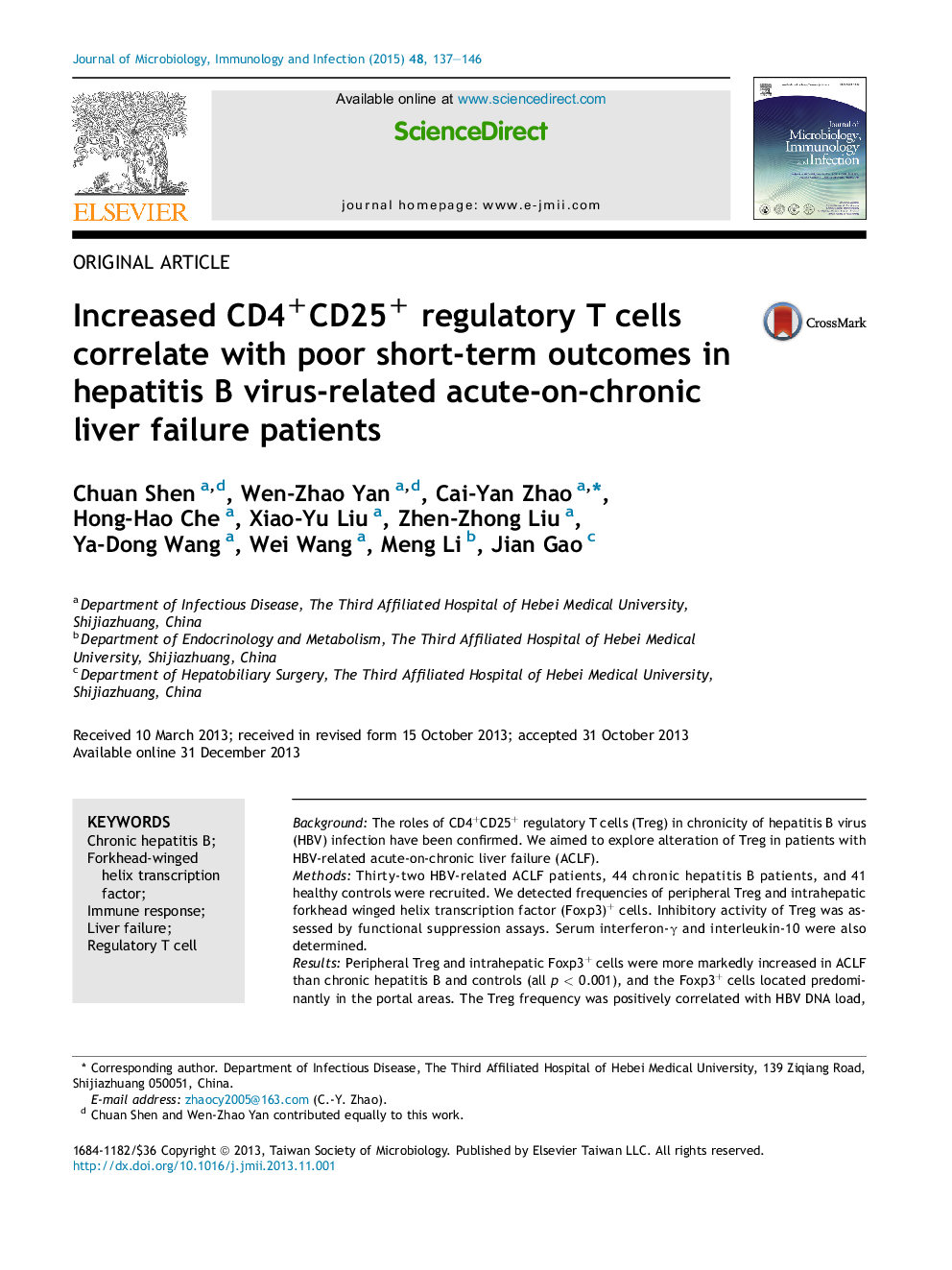| کد مقاله | کد نشریه | سال انتشار | مقاله انگلیسی | نسخه تمام متن |
|---|---|---|---|---|
| 3377837 | 1220054 | 2015 | 10 صفحه PDF | دانلود رایگان |

BackgroundThe roles of CD4+CD25+ regulatory T cells (Treg) in chronicity of hepatitis B virus (HBV) infection have been confirmed. We aimed to explore alteration of Treg in patients with HBV-related acute-on-chronic liver failure (ACLF).MethodsThirty-two HBV-related ACLF patients, 44 chronic hepatitis B patients, and 41 healthy controls were recruited. We detected frequencies of peripheral Treg and intrahepatic forkhead winged helix transcription factor (Foxp3)+ cells. Inhibitory activity of Treg was assessed by functional suppression assays. Serum interferon-γ and interleukin-10 were also determined.ResultsPeripheral Treg and intrahepatic Foxp3+ cells were more markedly increased in ACLF than chronic hepatitis B and controls (all p < 0.001), and the Foxp3+ cells located predominantly in the portal areas. The Treg frequency was positively correlated with HBV DNA load, international normalized ratio, model of end stage liver disease score, and serum interleukin-10 level in ACLF patients. Functional assays in vitro demonstrated that ACLF patients exhibited higher suppressive effects of Treg on proliferations of autologous CD4+CD25− T cells than controls. On logistic regression, prolonged international normalized ratio and higher peripheral Treg frequency predicted 30-day survival of ACLF.ConclusionThe patients with HBV-related ACLF exhibit increased amounts of Treg, of which redistribution from periphery to liver seems to modulate liver inflammation. Higher Treg amounts are associated with more severe liver disease in ACLF, and its level in combination with international normalized ratio may assist prediction of short-term outcomes of HBV-related ACLF.
Journal: Journal of Microbiology, Immunology and Infection - Volume 48, Issue 2, April 2015, Pages 137–146